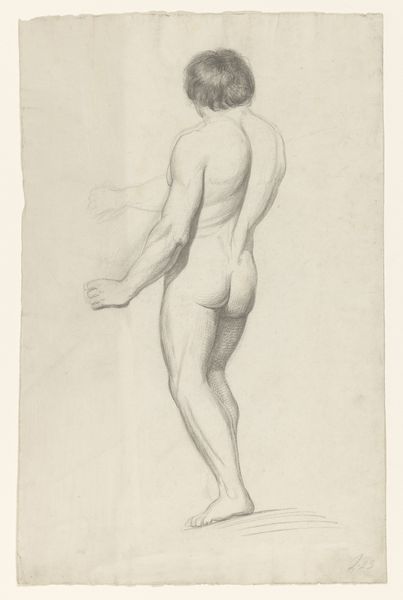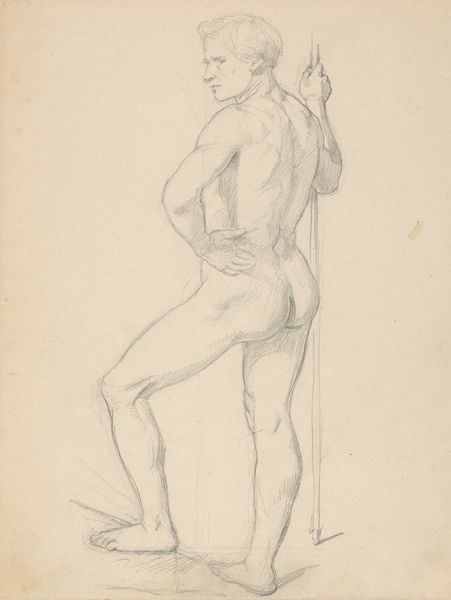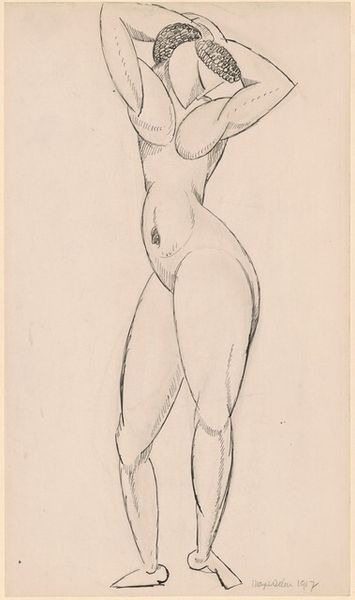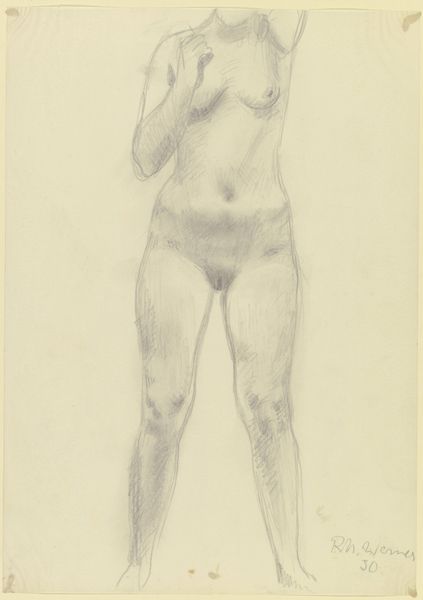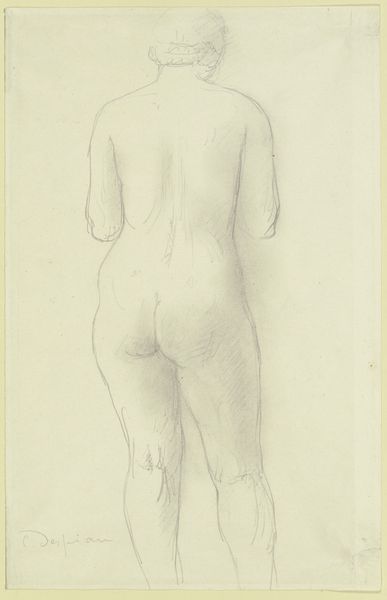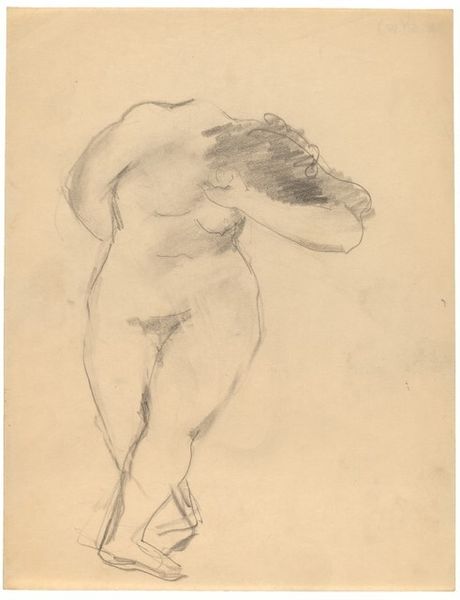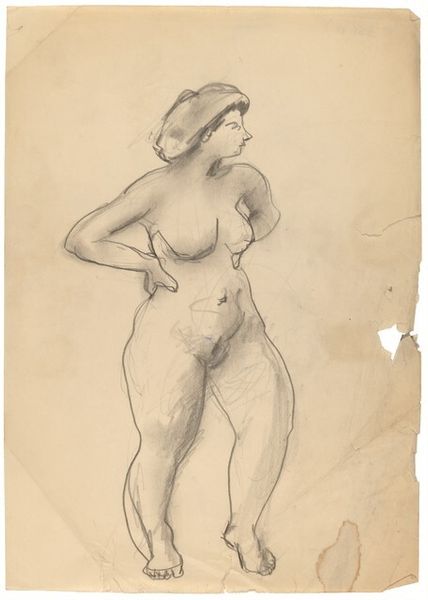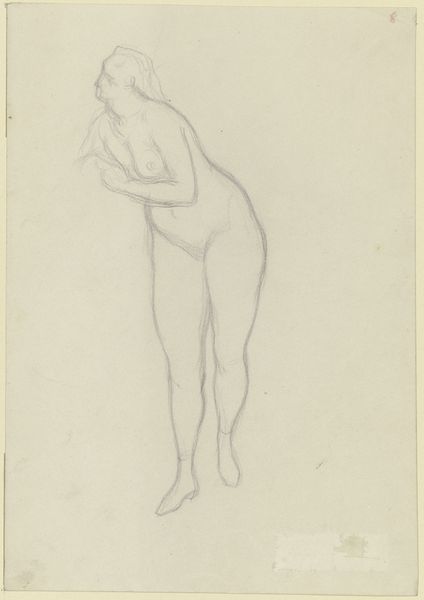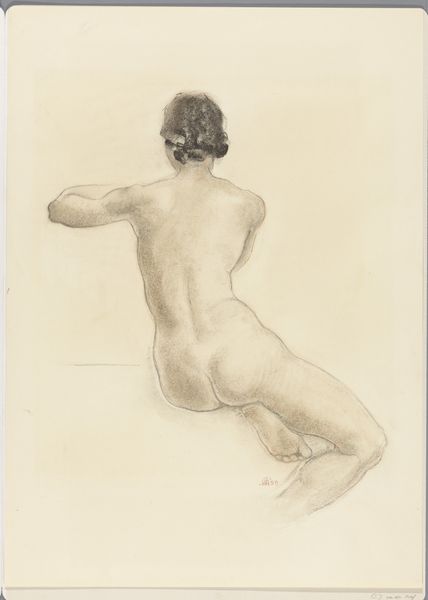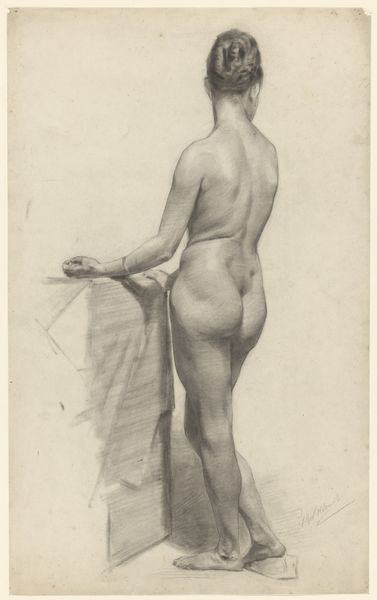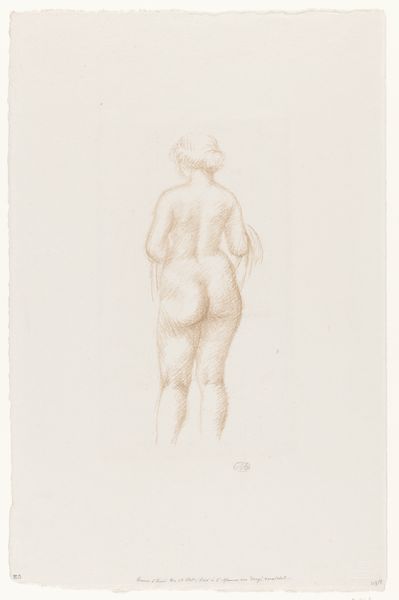
drawing, pencil
#
drawing
#
pencil drawing
#
pencil
#
portrait drawing
#
nude
#
realism
Dimensions: height 500 mm, width 327 mm
Copyright: Rijks Museum: Open Domain
Curator: Welcome. We’re standing before Aristide Maillol’s pencil drawing, “Female Nude, Seen From the Back,” created sometime between 1881 and 1925. It's part of the Rijksmuseum's collection. Editor: It has an oddly compelling stillness. There's a classical repose, almost like a Degas dancer caught offstage, but without any narrative; no story emerges. Curator: Precisely! Maillol was fascinated by the human form and classical sculpture, prioritizing the geometric volumes and sinuous lines. Notice the careful modulation of light and shadow using the humble pencil to render the figure with such a deep dimensionality. Editor: But whose gaze are we adopting? This is where the conversation becomes complicated. While formally elegant, the posture evokes a historical objectification of women. We are presented with the nude from the rear, a classic power dynamic in art history which invites the male gaze and strips the subject of agency. How might this historical context complicate the pure appreciation of line and form? Curator: That's a fair point, of course, however, Maillol, it can be argued, strives to idealize the body. The visible structural harmony supersedes specific details. Observe the almost sculptural treatment of the spine and shoulder blades, like tectonic forms within a landscape. Are we so willing to dismiss his pure attempt to find ideal beauty through careful abstraction of organic forms? Editor: Perhaps not dismiss, but examine critically! These historical lenses shift and challenge perception itself. Who decides whose body becomes immortalized as "ideal?" I suspect her own perspective, if we were privy, might give us pause, as to this artistic objectification of beauty and whether she felt a similar beauty was mirrored in society's view of her as a woman. Curator: I take your meaning, it may always be up for question whether we appreciate its form as intended. Nevertheless, from a purely aesthetic approach it has significant merit due to the careful consideration of balance and proportion and in this sense it stands for itself. Editor: Absolutely, and grappling with the intersections is vital. It compels me to question what's absent here—a face, an identity, and ultimately the story we're not being told about her. Curator: A potent reminder of how much art encourages introspection. Editor: Indeed. Let’s proceed to the next work.
Comments
No comments
Be the first to comment and join the conversation on the ultimate creative platform.

